K-12 Lesson Planning with Commom Core
OVERVIEW
(Please see K-12 Curriculum – Lesson Planning for a look at lesson planning basics)
For years, teachers have been designing persuasive writing lessons for their students. The Common Core State Standards are changing that by asking teachers to move away from persuasion and toward argumentation. Argumentation (called opinion writing in the elementary grades) is preferred by the CCSS because it is more rigorous and more in line with the kind of writing students will be expected to do in college and careers. 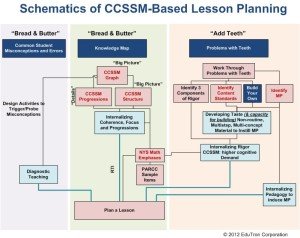
For example, Vermont will be emphasizing basic arithmetic, fractions in elementary school and focusing on memorization instead of reliance on calculators. Algebra II will be required for high school juniors by 2017. Improved difficulty level of books will be required to be read and less emphasis on how students “feel” about a book and more on analyzing content. Testing by computer is planned with results available almost “instantly. Critical reading, critical reasoning, and foundational math skills necessary for college and career success will be emphasized.
Shawn Donnelly, a seventh grade teacher in Brooklyn is excited about how the Common Core standards are changing his classroom. “It’s creating much more dialogue between students,” he said.
K-12 Lesson Planning is big business. If you Google the subject over 30 ads pop up offering lesson planning from businesses such as K-12 textbook publishers, independent curriculum developers and K-12 online schools. In addition, enterprising K-12 teachers have been writing and sell lesson plans to other teacher for years. With the advent of the Internet and email it has become a lot easier (see: K-12 Curriculum – Lesson Planning ).
WHAT COMMON CORE MEANS TO LESSON PLANNING
In addition to being bad for students, the current hodgepodge of academic standards prevents teachers from collaborating across state lines, according to Seria Walton, a former Teacher of the Year in Lansing, Mich. “I was on a leadership team with teachers from a variety of different states, and as we looked at each other’s standards, we realized there was no continuity. They were vastly different. We couldn’t collaborate on lesson plans because no one was teaching the same thing.”
Walton also had to completely change all of her lesson plans when she moved to Indiana from Michigan. “I had to reinvent the wheel for what to do with the kids,” she said, “and there were so many Indiana standards, it was impossible to teach anything in depth.”
Common Core Lesson Plan Training
At one college of education, teacher candidates must now write sample lesson plans that are aligned with the Core. Prospective teachers start with an overview course called Education in a Diverse Society, in which they receive an introduction to the new standards.
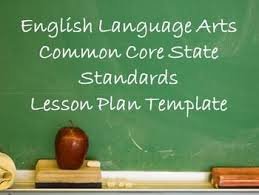 In their second class, the students attempt to put those standards into practice while writing their first lesson and unit plans; they continue to explore the standards in greater depth as they advance through their methods courses. There’s not a lesson they write without addressing the Common Core. They are asking their candidates to design more assessments with multi-step math problems; and teaching them to identify appropriately challenging texts.
In their second class, the students attempt to put those standards into practice while writing their first lesson and unit plans; they continue to explore the standards in greater depth as they advance through their methods courses. There’s not a lesson they write without addressing the Common Core. They are asking their candidates to design more assessments with multi-step math problems; and teaching them to identify appropriately challenging texts.
With little centralized curriculum being written, teachers will also have to play a larger role than they may be accustomed to in turning Common Core Standards into lesson plans.
After rejecting an entire slate of math and reading textbooks from Houghton Mifflin Harcourt, McGraw Hill and Pearson Louisiana has mostly left districts to their own devices when it comes to curriculum and schools are relying on a mix of teachers, consultants and curricula from other states for new lesson plans.
At some Teach for America chapters TFA corps members are using the Literacy Design Collaborative, a tool the state is making available to support lesson planning in English language arts. Some are part of the state’s teacher-leader program that turns teachers into Common Core experts for their schools.
Sample Common Core Testing
In the sample questions released by Common Core’s PARCC, students write short answers to some questions, such as writing a topic sentence for a paragraph or explaining their answer to a math problem. One sample task for fourth grade students is to have them write an essay comparing characters from two readings and prompting them to explain how the thoughts, words and/or actions of the character help the student understand what the character is like. Students will be scored between zero and four on such questions based on the clarity and grammar of their answer, as well as on how accurately and well they refer to the text.
Another sample item requires students to create a summary of a story by choosing three sentences from a list of eight and dragging them into a box to allow students to show their whole range of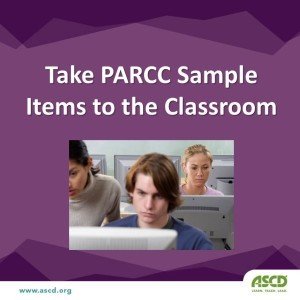 knowledge in the way that a multiple-choice test can’t.
knowledge in the way that a multiple-choice test can’t.
But practice tests and examples published so far suggest that parts of the new tests won’t deviate far from the traditional format. PARCC’s sample literary analysis task for fourth grade, for example, asks multiple-choice questions such as, “Which statement best expresses the themes of the story?”
A policy analyst at the Stanford Center for Opportunity Policy in Education said the move to tests with performance tasks was promising, but not enough to realize the ultimate goals of the Common Core. They are basically standardized tests with some open-ended questions, so they do allow students to apply the skills that they have, but in a bounded environment.
It is hoped that policymakers will acknowledge that standardized test scores are imperfect measures of what students are supposed to learn under the new standards. Common Core has standards of speaking skills for each grade, for instance, which can’t be measured with multiple choice questions or essays. Students should be expected to do well on the test, but, at this stage, the tests are incomplete and don’t do enough to realize the ultimate goals of the Common Core.
PARCC will offer two end-of-year tests, plus an optional diagnostic test for the beginning of the year and an optional midterm exam to help teachers measure student progress throughout the year. Critics worry the extra tests will exacerbate test prep, as teachers will take extra care to cover the items they know will be tested. Students will be sitting at computer terminals practicing their test-taking skills.
CURRENT LESSON PLANNING APPLICATIONS
(The following is an abstract from “New Standards Mean Lots of Talking—And Even Writing—About Math” By Barbara Kantrowitz – Hechinger Report – 10/15/2013
Cicely Woodard has the daunting task of helping eighth-graders understand and even enjoy math. She leads her students at Nashville’s Rose Park Magnet Middle School through the intricacies of graphs, formulas and equations. It’s knowledge she knows they’ll need to get into college. “I love the fact that at this age, they can still fall in love with math. They can still change their minds about it.”
Woodard thinks her mission became a little easier this school year because of the Common Core, a set of education standards for math and English language arts that have been adopted by Tennessee, along with 44 other states and the District of Columbia.
“I am definitely a fan,” says Woodard, 35, who has been teaching for 11 years. “I am so excited by the thinking and the learning that kids are doing now, and the way that they are able to express  themselves in the classroom. It’s really exciting to hear them talk and use all of the math terms to explain their thinking and construct arguments.”
themselves in the classroom. It’s really exciting to hear them talk and use all of the math terms to explain their thinking and construct arguments.”
On a recent Friday, Woodard began her honors algebra class by asking students their answers to homework problems. Students had to explain their strategies for reaching particular answers. When one boy realized he’d come up with the wrong figure, he and the rest of the class talked about why he was wrong and what he should have done differently.
A few minutes later, Woodard led a discussion of how to determine whether a problem has one solution, no solution or many solutions. She gave her students a problem to work on that had only one solution, but that didn’t mean the assignment was simple. Not only did she want students to use two different mathematical strategies to solve the problem, she also wanted them to be able to explain their thinking using complete sentences and correct punctuation.
Over the past year, Woodard has become something of an expert on Common Core math. In the summer of 2012, she attended Common Core training sessions that the state ran for eighth-grade math teachers. But she says her teaching practice didn’t really change until last December, when she started training to become a coach for Algebra I this past summer. “I learned more about how to apply the standards,” she says.
After training weekends in March and April, she felt transformed. Woodard remembers coming home after the April training exhausted but inspired. “I really wanted to rest,” she says, “but my mind kept turning about how I could change this lesson that I was going to do the very next day. I didn’t want to do it the way I had planned. After that training, I knew how to fix it.”
Woodard learned to ask questions of students that could get at how well they understood the lesson and found that having students work on problems in groups helped them figure out solutions together. “The whole idea of them talking more than me was important,” she says. “I needed to be the facilitator and not the lecturer.”
Woodward had a chance to pass those lessons on this summer as one of about 700 coaches training 30,000 teachers around the state.
 Teachers who didn’t attend the sessions can learn about the standards through webinars and other tools on the state’s Common Core website, Barton says, and by working with other teachers in their schools who have been trained.
Teachers who didn’t attend the sessions can learn about the standards through webinars and other tools on the state’s Common Core website, Barton says, and by working with other teachers in their schools who have been trained.
The change to a new way of thinking and teaching hasn’t been easy. At Rose Park, instructional coach Sarah Shepherd says the Common Core standards challenge teachers who have grown used to another way of doing things. “It really forces the teacher to become more engaged, and the children to engage with each other,” she says.
Having the kids speak up more in class gives Woodard a better sense of how well they understand specific concepts. If she sees a problem, she can help on the spot. “I think it is about setting high expectations and believing that they can do it,” Woodard says.
Why the new standards felt liberating. They especially like the interdisciplinary approach. Braswell was proud that her students were using original sources in writing projects, and Denning said she felt classroom discussions helped students enjoy science more.
(The following is an abstract from “As State Watches, LA Unified Tests New Ways to Grade Teachers,” By Ashly McGlone – Center for Investigative Reporting – June 3,  2013)
2013)
At Melrose Elementary School, veteran teacher Sachiko Miyaji is in her 17th year teaching, gathered her second-graders on the carpet at the front of the class for a lesson on lions and tigers.
“Did you know the back feet of lions and tigers have only four toes?” Miyaji asked. “So which feet, the front or the back?” Her 7- and 8-year-olds students respond in unison, “The back!”
Reading from a book, Miyaji told her students that lion prides typically include two dozen cubs. “That’s 24! Twenty-four cubs,” one student shouted. “How do you know it is 24, Carlos?” Miyaji asked. “Because a dozen is 12,” Carlos said.
A kindergarten teacher, Casco, had her 5- and 6-year-old students work in small groups. Students played a series of games related to frogs and fish to practice adding and subtracting and eventually are asked to illustrate a story with an equation and grade their own performance on a rubric. “It forces you to reflect,” Casco said of the evaluation changes, which include the principal asking teachers after the observation if they achieved their objective.
“It did hold me more accountable to the results than the old evaluation system would have.” Its observations like this that many teachers hope will provide a clearer picture of their classrooms and make up for any deficiencies in using test scores to judge their performance.
SHARING COMMON CORE LESSON PLANNING
(The following is an abstract from “Getting Teachers to Share Nicely,” –Hechinger Report.)
Most teachers have file folders and flash drives full of material that they use to generate awesome lessons year after year: activities, projects, discussion questions, texts, audio, and video. But they don’t always have easy ways to share these ideas, or discover new ones.
don’t always have easy ways to share these ideas, or discover new ones.
A new non-profit ed-tech start-up called OpenCurriculum, based in Pittsburgh, launches this week aiming to change all that by focusing on the ease of creation and building local communities of sharing. It’s designed to work as a place where teachers can easily create, edit and exchange textbook-style content and step-by-step lesson plans.
“YouTube made the creation and sharing of videos a much easier process,” says founder Varun Arora. “We’re trying to nail creation for educational content.”
There are lots of other versions of this idea out there: ShareMyLesson is backed by the UFT, BetterLesson was created by a Teach for America alum, and Teachers pay Teachers has the unique take of having teachers buy and sell lessons rather than sharing for free.
Open Curriculum is trying to differentiate itself by focusing on the nuts and bolts of creating and sharing resources, and the development of local communities of sharers.
 Github, a website where developers can collaborate on open-source software projects, enables “forking” and easy control over many different versions of a single program. OpenCurriculum uses super-simple language and a web-first interface to allow teachers to do the same thing. You can upload using Dropbox, Facebook, or Gmail or create projects directly in the browser.
Github, a website where developers can collaborate on open-source software projects, enables “forking” and easy control over many different versions of a single program. OpenCurriculum uses super-simple language and a web-first interface to allow teachers to do the same thing. You can upload using Dropbox, Facebook, or Gmail or create projects directly in the browser.
Making cool learning resources is one part of the problem OpenCurriculum is trying to address. The other issue is finding them. In simplistic terms, the Internet enables anyone to learn anything about anything. In practice, that too often means Wikipedia. Tons of Creative Commons-licensed educational content is out there, in “Open Educational Resource” repositories maintained by leading institutions, but it’s often hard to find, hard to browse, hard to adapt and therefore hard to reuse.
I’ll give a simple example. My cousin was teaching a college art history course, and she spent dozens of hours assembling her slides. In theory, she could have saved that time by adapting other slideshows created in previous years by other people teaching the same or similar courses. But first of all, she didn’t think of that; secondly, she didn’t know where to find the other slideshows; thirdly, she didn’t know how to easily customize them finally, she also couldn’t share her completed slideshow freely because of copyright issues with contemporary artworks.
It turns out that local academic cultures may be hugely important to sharing. Arora, a graduate of Carnegie Mellon in Pittsburgh, studied the “One Laptop per Child” program, trying to figure out why the ambitious technology giveaway hadn’t had more of an impact on learning in countries around the world.
“We realized the problem was not locally relevant content,” he says (a common criticism of the OLPC program in various implementations around the world). It’s not just about language – teachers need lesson plans that fit local ideas and academic requirements. “K-12 especially is very specific to certain areas.” This would seem to work against the “universal” premise of sharing free and open learning resources.
But OpenCurriculum is reaching out to local education communities in Pittsburgh, where they’re based, as well as South Africa and Nepal. The idea is that once teachers get the hang of pooling resources and collaborating locally, the sharing bug will spread.
Since “Speaking and Listening” are now key elements of the Common Core Standards K-12 curriculum will need to specifically incorporate elements to encourage in-class interactivity between not only teacher and student but also between student to student.
LESSON PLANNING IN A TECHNOLOGICAL CLASSROOM
Technology has been a big aid to lesson planning. The primary benefit has been the speed and easy to which lesson planning can be applied. Teachers can now easily modify publisher lesson plans to fit the needs of the lesson they are teaching or the needs of their class or they can create an original lesson plan from original or published curriculum.
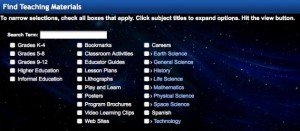 Technology has allowed new resources have to be designed and distributed whenever the technological platform has been changed. However, finding quality materials to support classroom objectives after such changes is often difficult even after they exist in sufficient quantity and many times teachers must design these resources on their own. The use of Open Education Resources OER has been big aid in designing original lesson plans.
Technology has allowed new resources have to be designed and distributed whenever the technological platform has been changed. However, finding quality materials to support classroom objectives after such changes is often difficult even after they exist in sufficient quantity and many times teachers must design these resources on their own. The use of Open Education Resources OER has been big aid in designing original lesson plans.
A teacher can now complete a class segment and then use OER materials to allow both advanced and remedial students to study at the same time, in the same classroom with a feeling of class unity which aids the struggling students with tremendous study aid call self-esteem.
The slow to develop use of open educational content has been a perennial issue since the beginning of the movement ten years ago, and there’s been a move to shift from talking about Open Educational Resources (OER) to talking about open educational “practices”–what has to happen in schools in order for OER and open learning to be a robust part of education.
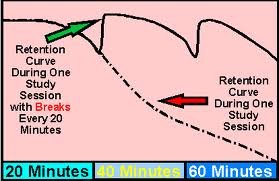 Critics have complained that the use of technology has actually diminished student’s attention spans. They say that planning lessons with in depth content has diminished and technology has aided in this demise.
Critics have complained that the use of technology has actually diminished student’s attention spans. They say that planning lessons with in depth content has diminished and technology has aided in this demise.
`Barry Schwartz is a professor of psychology at Swarthmore College. Schwartz’s says that Teachers need to “make” students pay attention, instead of bowing to reduced attention spans with shorter, more attention-grabbing lessons.
“The Internet is a huge, buzzing conversation, not a lecture hall. No one is forced to listen to anyone else. Individual posts might be shorter, but rallies are long: You might write a thousand-word article, or post a ten-minute video, and it generates tens of thousands of words’ worth of comments and Tweets. That’s where the complexities truly emerge, in the back and forth.
Overall, I don’t believe that our attention has diminished; it’s just that there’s so much more to pay attention to, and to contribute to as well. And isn’t this a better pedagogical model for encouraging people to grapple with complexity? This is the intellectual virtue and courtesy of the Internet age: recognizing that attention is scarce and exhaustible, you take just as much as you need.”
Video Game Lesson Planning
(The following is an abstract from “New ‘SimCity’ Tries to Link with Schools” F Chronicle Business & Technology Benny Evangelista – 03/05/2013)
With the release of the first new version of “SimCity” in 10 years a new effort is underway to create classroom lesson plans that use video games to help students hone their science, technology, engineering and math skills.
The idea behind SimCity EDU, run by a nonprofit group called GlassLab, is to create ways for teachers to leverage the learning power of “SimCity” and other games to reach generations of students who are already well versed in digital technologies. A middle school student, for example, might learn more from writing an essay about creating a successful business district in “SimCity” than just listening “to a teacher standing in front of the class, in front of a white board, trying to explain taxes and budgets,” said GlassLab General Manager Jessica Lindl.
Lesson Plans
The group has also worked with teachers from around the country to develop more than 20 lesson plans at launch. One, for example, has students selecting the three public works projects they want to build as mayor of their virtual city and then writing essays detailing whether they were successful and why.
The game is rich in data and lets players learn what their virtual citizens are thinking, so the students can “gather evidence” to support their essay conclusions, said Lindl. “SimCity’ is already a phenomenal learning tool,” she said. GlassLab hopes to become a central online meeting ground for teachers to customize lesson plans.

Recent Comments